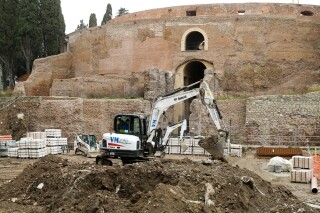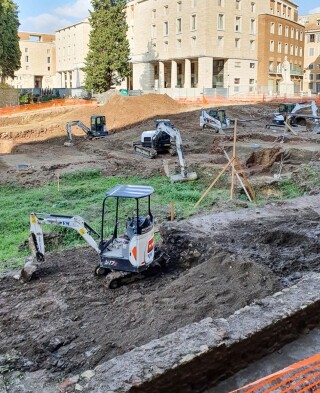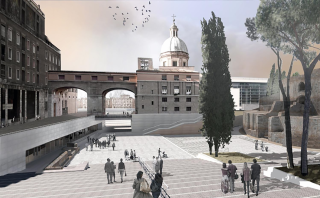Rome is, of course, dotted with archaeological sites that reveal evidence of the ancient Roman civilization. But the Mausoleum of Augustus is arguably the most impressive. This is the circular tomb that Emperor Augustus built for himself and his family.
This archaeological site, said to be the largest in Europe for 75 years, requires more than just pointed trowels. The five Bobcat machines have been working without interruption for two years. They are a T590 compact track loader and E17, E35, E45 and E85 mini-excavators.
However, the Bobcats are being deployed as delicately and precisely as a trowel. Before proceeding with the excavation work, surveys are carried out by the superintendent archaeologists. The first part of the excavation can be done quite quickly. Once a certain depth has been reached, things slow down. Each excavator is constantly manned by an archaeologist to examine each stone and each fragment unearthed.
The Bobcat machines are used with toothless buckets, to prevent damaging any finds. In addition, a screening bucket sifts the earth for possible treasures. Finally, forks were used to move material onto pallets.
As well as the archaeological dig, the five Bobcat machines are also working on transforming the Piazza Augusto Imperatore, in front of the Mausoleum, into a public space, which will house the ticket office for the Mausoleum and a cafeteria. The square will be connected to street level by two stairways, one on the side of the Ara Pacis museum and the other towards the church of San Carlo al Corso, in effect recreating an amphitheatre to stage outdoor events.

Of the 7,000 sqm piazza being recreated, 1,600 sqm will be at the same level as the archaeological works, including 350 sqm of original first-century flooring.
The Bobcat excavators have carefully moved 16,000 cubic metres of soil, layer by layer, to a depth of seven metres from road level. Finds have included a pomerial stone stands out, a block of travertine just over two metreshigh dating back to 49 AD, which marked the edge of the city and is now exhibited at the Ara Pacis museum.
The work has been carried out by VM Ecologica, a company based in Rome, that has interests in haulage, earthmoving, demolition and collecting construction waste, but above all in archaeological excavations, thanks to the experience of the owner, Marco Vita, who has worked on other archaeological digs in the city. These include restoration works on the Palatine Hill and at the Gabbi Archaeological Museum on the Via Prenestina, road repair work at Villa dei Quintili, excavations at the Balbi Crypt Museum in the centre of Rome, and excavations to rediscover part of the Via Appia, which passes nine metres below the current street level in the centre of Rome.
Marco Vita says: "Once again, Bobcat equipment has lived up to our expectations, especially in terms of efficiency and reliability. They are undoubtedly excellent machines. I have always bought Bobcat, and I have no intention of relying on other machines in the future. The competition's machines give good performance, but I have complete confidence in Bobcat. My next purchase will be the E10e electric mini-excavator for a very special site in Rome."
Pictured below is an artist’s Impression of finished Augusto Imperatore Square project.




